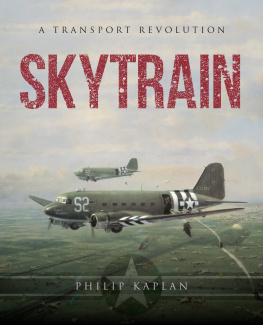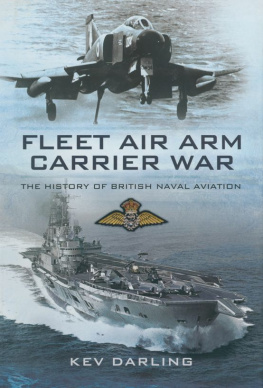Copyright 2015 by Philip Kaplan
All rights reserved. No part of this book may be reproduced in any manner without the express written consent of the publisher, except in the case of brief excerpts in critical reviews or articles. All inquiries should be addressed to Skyhorse Publishing, 307 West 36th Street, 11th Floor, New York, NY 10018.
Skyhorse Publishing books may be purchased in bulk at special discounts for sales promotion, corporate gifts, fund-raising, or educational purposes. Special editions can also be created to specifications. For details, contact the Special Sales Department, Skyhorse Publishing, 307 West 36th Street, 11th Floor, New York, NY 10018 or .
Skyhorse and Skyhorse Publishing are registered trademarks of Skyhorse Publishing, Inc., a Delaware corporation.
Visit our website at www.skyhorsepublishing.com.
10 9 8 7 6 5 4 3 2 1
Library of Congress Cataloging-in-Publication Data is available on file.
Cover design by Tom Lau
Cover photographs courtesy of (clockwise from top) Philip Kaplan, the U.S. Navy, the U.S. National Archives, and HMS Illustrious
Print ISBN: 978-1-63450-482-9
Ebook ISBN: 978-1-63450-555-0
Printed in China
CONTENTS

Over the years, the aircraft carrier has come to be known to many American naval aviators as the bird farm.


THE BIRD FARM
ON 2 DECEMBER 1908, REAR-ADMIRAL W.S. Cowles, Chief of the U.S. Navy Bureau of Equipment, recommended to the Secretary of the Navy that a number of airplanes be purchased to operate from a ships deck, carry a wireless telegraph, operate in weather other than a dead calm, maintain a high rate of speed, and be of such design as to permit convenient stowage on board ship. Thus began the history of the aircraft carrier and naval aviation.
At the advent of the aircraft carrier, the major navies of the world were battleship forces. These great vessels were the largest, most heavily-armed and armored warships afloat, and their very presence had, on occasion, seen them prevail without even engaging the enemy, so intimidating were they. Why, then, did the aircraft carrier virtually scuttle the venerable battlewagon as the new capital ship of the worlds great sea powers? To begin with, it was her versatility. The aircraft carrier is at once a self-propelled mobile airbase that is essentially self-sufficient, as well as being a wholly effective servicing facility. Into the twenty-first century, the modern U.S. supercarrier operates as the spearhead of an awesome force called a carrier battle group. The other types of ships in carrier battle groupsdestroyers, frigates, cruisers, replenishment tankers, and fast attack submarinesare there to protect mother, the CVN or nuclear-powered aircraft carrier.
The carrier weapon has another edge over the battleship. It gives a fleet the ability to fight and win a naval battle at arms length, out of sight of the enemy. At the start of the new millenium, the twelve operational carrier battle groups of the U.S. fleet, and its assault carriers, were capable of covering immense areas of ocean, sending massive air strikes at inshore as well as ocean targets, providing air support for amphibious landings, helicopter troop ferrying, search-and-rescue, and conducting highly sophisticated anti-submarine warfare. While perhaps less than totally invulnerable to enemy attack, the CVN, within the protective shelter of her battle group, is the biggest, widest-ranging, most powerful and fearsome threat that has ever put to sea. In just a quarter of a century her capabilities have utterly eclipsed those of her battleship predecessor. According to the late United States Senator John C. Stennis (namesake of the USS John C. Stennis , CVN-74), Chairman of the U.S. Senate Armed Services Committee from 1969 to 1980, and a strong supporter of a powerful, well-trained and well-equipped military, The best way to avoid war is to be fully prepared, have the tools of war in abundance, and have them ready. Of the modern nuclear-powered aircraft carrier, Stennis said: It carries everything and goes full-strength and is ready to fight or go into action within minutes after it arrives at its destination. There is nothing that compares with it when it comes to deterrence.
Clement Ader, a less than successful early French aviator, made the worlds first flight in a powered airplane from level ground on 9 October 1890. He did the hop in a steam-powered monoplane, the Eole , a large bat-like craft. Ader was then asked by the French Minister of War to design, build, and test a two-seat plane to carry a light bombload for the military. The result was a failure, crashing at Satorg on 14 October 1891, and the contract for the warplane was cancelled. Ader, however, had an unshakeable faith in his personal vision of the future of aviation. He accurately forecasted that land warfare would be transformed by the practice of reconnaissance from aircraft, and that it would also revolutionize the methods of war fleets at sea. He predicted that they would carry their aircraft to sea with them. He coined the term porte-avions (aircraft carrier) and wrote that such ships would be unlike any other, with clear, unimpeded flight decks, elevators to take aircraft (with their wings folded) from the flight deck to stowage below for servicing and repairs and bring them back again, and the ability to operate at a high rate of speed. His foresight was amazing.
The worlds first reasonably successful take-off by a fixed-wing aircraft from the deck of a ship was made by Eugene Ely, an exhibition pilot for aircraft designer and builder Glenn Curtiss, achieved in a Curtiss Pusher in November 1910. Ely flew the craft down a gently sloping wooden platform on the forecastle of the U.S. light cruiser Birmingham in the afternoon of 14 November as the ship steamed slowly in Chesapeake Bay. In the attempt, Elys aircraft actually hit the water once, but he retained control and managed to land safely on the shore.
In another equally significant trial held at San Francisco in January 1911, Ely successfully landed a Curtiss aircraft on a specially-built platform over the quarter deck of the cruiser USS Pennsylvania . He used undercarriage hooks to engage one of twenty-two transverse wires that were stretched across the platform and anchored at the sides with sandbags. Within months of this second successful carrier trial, Eugene Ely was dead, killed in an air crash.
In the month prior to Elys landing trial, Curtiss offered at his own expense, to instruct an officer of the U.S. Navy in the operation and construction of a Curtiss aeroplane. On 23 December Lieutenant T.G. Ellyson reported to North Island in San Diego bay, and four months later was graduated by Curtiss who wrote to the Secretary of the Navy: Lt. Ellyson is now competent to care for and operate Curtiss aeroplanes.

HMS Illustrious is the fifth Royal Navy ship to bear that name. The 20,000-ton Invincible -class aircraft carrier supported a mix of up to twenty-two aircraft. She was a sister ship to Invincible and Ark Royal .






















